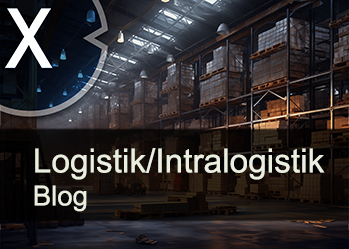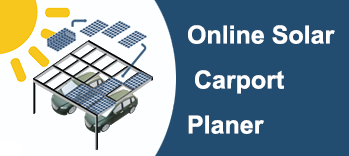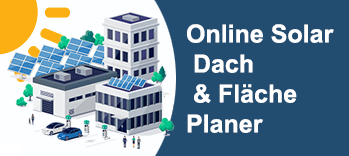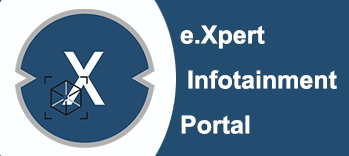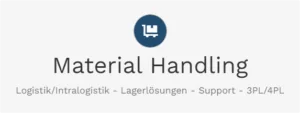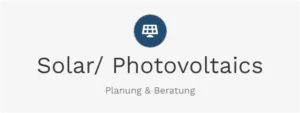Market entry strategy for Australian companies in Germany and Europe: Analysis and recommendations
Xpert pre-release
Language selection 📢
Published on: April 21, 2025 / update from: April 21, 2025 - Author: Konrad Wolfenstein

Market entry strategy for Australian companies in Germany and Europe: Analysis and recommendations - Image: Xpert.digital
Australia and Germany: Strategic partnerships for sustainable growth
Critical minerals and green hydrogen: Australia's potential in Europe
This article analyzes the current economic situation of Australia and identifies sectors with high potential for successful expansion to Germany and the European Union (EU). Germany is rated as a strategic bridgehead for the European market, whereby the advantages of a partnership with a specialized German company for marketing, public relations (PR) and business development are highlighted.
Australia's economy shows signs of moderate relaxation, supported by government spending and a slight revitalization of consumption, but faces challenges such as relevant productivity and inflation. The strategic realignment of Australia, especially as part of the "Future Made in Australia" initiative, focuses on sectors such as renewable energies, critical minerals (in particular their further processing), technology (FinTech, Agritech, Health Tech, Cybersecurity) and sustainable agricultural and nutritional management. These sectors have a strong synergy with the strategic priorities of Germany and the EU, which are characterized by the Greens and digital transformation, diversification of supply chains and the need for innovative solutions.
As a largest economy of the EU and central logistics hub, Germany offers significant advantages for Australian companies. These include access to the EU internal market, an excellent infrastructure that is further strengthened by massive investments, a highly qualified workforce potential (despite specific bottlenecks) and a stable investment atmosphere with comprehensive support offers, such as the Germany Trade & Invest (GTAI).
However, the complexity of the German and European market, including regulatory hurdles (GDPR, CRMA, MDR etc.) and cultural differences, is a significant challenge. Cooperation with a specialized German partner for marketing, PR and business development is therefore not just a tactical option, but a strategic success factor. Such a partner offers essential market knowledge, access to networks, support for cultural adaptation and credibility, which accelerates the market entry and minimizes risks.
The greatest opportunities for Australian companies are in the delivery of further processed critical minerals, green hydrogen and its derivative, specialized technology solutions (in particular B2B for medium-sized companies, Regtech, Digital Health, Cybersecurity-compliance) and high-quality, sustainable agricultural products. Success depends largely on a targeted strategy, the willingness to adapt and the choice of the right local partner.
Suitable for:
- Refrigerated and fresh logistics: Woolworth Australia was able to reduce food loss by 40% with the GS1 DataMatrix Code
Australia's economic landscape: the stage for global ambitions
Current economic indicators: a moderate recreational path
After a phase of slowdown, the Australian economy is on a path of gradual relaxation. In the fourth quarter of 2024, the gross domestic product (GDP) recorded growth of 0.6 %, the strongest quarterly performance since December 2022, which also ended Australia. The annual growth was 1.3 %, but this is below the long -term average of 2.6 %. The forecasts for 2025 indicate continued moderate growth. The Reserve Bank of Australia (RBA) expects Vanguard about 2 %, KPMG 2.0 %, the International Monetary Fund (IMF) 2.1 % and OECD 1.8 % forecast. Slow growth rates are expected by Deloitte (1.6 %), which reflects the continued global uncertainties. The government spending was recently a significant support of the economy. However, this dependence on state impulses and population growth could mask an underlying weakness in private investments and productivity. Companies that are considering a costly international expansion must therefore take into account potential domestic challenges such as weak demand or higher financing costs if government support subsides or interest rates are longer due to inflation.
Inflation has weakened significantly in the case of consumer prices (headline CPI) and at the end of December 2024 was 2.4 % in the annual comparison, supported by state subsidies. However, the underlying inflation (Trimmed Mean), which calculates these special effects, proves to be more persistent. It went back to 3.2 %, but is still above the mean of the RBA target corridor of 2-3 %. Forecasts indicate that core inflation will remain about 2.5 % or slightly over it by 2025/2026. It is expected that headline inflation rises again as soon as the subsidies expire. This discrepancy between the headline inflation pressed by temporary measures and persistent core inflation draws a potentially misleading image of the price pressure. Companies therefore have to expect persistent domestic cost pressure in wages and preliminary work, which influences the profitability and competitiveness of exporters.
The job market remains robust, but shows light loosening trends. The season -adjusted unemployment rate was 4.1 %in March 2025. Although this means a slight increase compared to earlier deep stands, the rate of historically is still low.13 With 2.2 %, employment growth is solid in the year. Sub -activity is low.11 Wage growth (Wage Price Index, WPI) has weakened to 3.2 % annually.
The RBA lowered the Leichtzins (cash rate) to 4.10 %in February 2025, but remains careful due to the persistent core inflation and tension on the labor market. The market expectations praise further loosening, with the interest rates forecast at around 3.35-3.60 % at the end of 2025.
Australia remains an important exporter in foreign trade, especially raw materials 14, with China being the dominant trading partner. The exchange rate of the Australian dollar compared to the US dollar has weakened, which is reflected on the commercial prospects 16, and last noted by $ 0.63-0.64.
Important Australian economic indicators & forecasts (2024-2026)
Note: Forecasts can vary and are subject to uncertainties.
The Australian economy is characterized by various indicators and forecasts for the years 2024 to 2026. Real GDP growth is estimated at 1.8 to 2.1 % for 2025 and for 2026 to 1.8 to 2.5 %. Headline inflation (CPI) is expected to be around 2.9 % at the end of 2025 and around 2.6 % in late 2026. The core inflation will be estimated at around 2.5 % for the end of 2025 and over 2.5 % for the end of 2026. The unemployment rate reached 4.1 % in March 2025 and will be forecast to around 4.5 % by the end of 2025. The key interest rate (RBA Cash rate) is currently 4.10 % and is expected to fall between 3.35 % and 3.60 % by the end of 2025. The AUD/USD exchange rate, currently around 0.63 to 0.64, is estimated to be 0.64 for the end of 2025. It should be noted that all forecasts are shaped by uncertainties and can change.
Dominant industries and aspiring growth sectors
The Australian economy is traditionally dominated by the service sector, which in 2017 generated 62.7 % of GDP and employed 78.8 % of the workers.14 The mining sector remains crucial, historically, it contributed around 6-8 % to GDP and is also responsible for important export goods such as iron ore.14 Also responsible with 2.8 % of GOP. The country's largest companies include players from banking, the raw material sector, retail and infrastructure.
At the same time, government policy, in particular the "Future Made in Australia" initiative, and global trends promote the development of new growth engines with a focus on sustainability and technology:
- Renewable energies & green hydrogen: Australia uses its abundant solar and wind resources as well as huge land areas to position themselves as the leading producer of renewable energy and green hydrogen. A significant project pipeline is under construction.
- Critical minerals: The focus shifts from pure extraction to further processing and added value in your own country. These minerals are essential for global technology and energy reversal efforts.
- Technology: The focus is on the promotion of key technologies such as artificial intelligence (AI), quantum computing and cybersecurity as well as Fintech, Agritech and Healthtech.
- Advanced production: closely linked to the energy transition and the added value of raw materials.
- Sustainable agricultural and nutritional economy: Australia builds on its reputation for high quality and sustainability to operate global markets.
- Health and biosciences: A large and leading sector in the Asia-Pacific region.
Economic challenges and strategic outlook
Despite the strengths, Australia faces significant challenges. This includes slow growth in productivity, pressure on the cost of living that dampens consumption, lack of housing and affordability, as well as a delayed implementation of industrial policy measures such as the "Future Made in Australia" initiative and the National Reconstruction Fund (NRF). In addition, there are competing state financing needs for defense (Aukus), the care system, housing construction and the energy transition. The strong dependence on the trade in China also creates a diversification pressure, while global economic uncertainties and potential protectionism, such as possible US tariffs, represent risks.
These external geopolitical and economic pressures accelerate the need for Australia to diversify its export markets. This makes strategically oriented partners such as the EU and especially Germany more attractive, since their interests often match Australia's strengths. This situation creates a time window for Australian companies in strategic sectors (critical minerals, energy, technology) to enter into partnerships with Germany and the EU, supported by political framework works such as the EU Critical Raw Materials Act (CRMA) and the German-Australian hydrogen agreement.
Strategically, Australia must drive economic reforms to increase productivity, diversify trading partners, invest in competencies and innovation and accelerate the energy transition in order to use the opportunities of the green economy.
Australian sectors with high potential for expansion to Germany/Europe
Based on the current economic situation, the strategic priorities of Australia and the demand trends in Germany and the EU, several sectors crystallize, which are particularly promising for an expansion.
Critical minerals: From the extraction to processing opportunities
- Australian competence: Australia is already the world's largest exporter of iron ore, coal briquettes, aluminum oxide and lithium. The country has a huge occurrence of 26 of the raw materials on its list of critical minerals, 75 % of which are still undeveloped. This is supplemented by a strong mining service sector (METS). In addition to established large companies such as BHP, Rio Tinto, Fortescue and South32, there are numerous specialized companies listed at the Australian Securities Exchange (ASX) such as Pilbara Minerals (PLS), Mineral Resources (MIN), Arcadium Lithium (created from Allkem/AKE and LIVENT), LING), Lynas Rare Earths (LYC) and Iluka Resources (Ilu). A growing focus lies on the downstream processing to products such as lithium hydroxide, separated rare earths and battery evaluations, supported by state support programs. Companies such as Australian Strategic Materials (ASM), IGO Ltd., Queensland Pacific Metals (QPM), Ecograph, International Graphite, Lynas and Iluka are actively involved in developing such processing systems.
- German/EU demand: The demand for critical minerals such as lithium, cobalt, nickel, graphite and rare earths is extremely high in Germany and the EU. It is driven by the energy transition (batteries for electric vehicles and memory, wind turbines) and digitization. There is considerable import dependency, especially for processed materials from China. The EU Critical Raw Materials Act (CRMA) sets clear goals to diversify the sources of supply and to increase domestic processing and recycling (10 % extraction, 40 % processing, 25 % recycling by 2030). Germany is particularly susceptible to interruptions in delivery. Bilateral Agreement, such as the Memorandum of Understanding (MOU) between Australia and the EU as well as a feasibility study between Australia and Germany, promote cooperation. Although there are their own projects in Germany (e.g. Vulcan Energy, Zinnwald Lithium), they are far from sufficient to meet the need. 40 projects with Australian participation have already been recognized as strategic projects of the EU.
Renewable energies & green hydrogen: Support Europe's energy transition
- Australian competence: Australia has outstanding solar and wind resources as well as huge unused land areas. The declared goal is to become the world's most cost -effective producer of green hydrogen.21 An extensive project pipeline is under construction in which both large national and international actors are involved. The government supports this development massively and maintains international partnerships, especially with Germany through the hydrogen agreement, the hygate initiative and participation in the H2Global funding program. The focus is also on the export of hydrogen derivatives such as green ammonia.
- German/EU demand: Germany and the EU have a massive forecast import requirement of green hydrogen and its derivatives to achieve their climate goals and to decarbonize industries such as steel and chemistry. For Germany alone, an import requirement of 50-70 % of the estimated total demand of 95-130 TWH is expected by 2030 alone. Germany invests considerably (over 588 million EUR in H2Global tenders with Australia and Canada) to ensure care. The H2Global mechanism helps to bridge the price difference between production costs and the market price. EU policies support the market high run for hydrogen. While pipeline imports from neighboring countries are preferred for pure hydrogen, derivatives (such as ammonia from Australia) are essential by ship to cover the quantities required.
Suitable for:
Technology & Innovation: FinTech, Agritech, Healthtech, Cybersecurity
Australian competence
- FinTech: A growing sector with internationally recognized Unicorns such as Airwalllex, AfterPay (now part of Square/Block), Judo Bank and Pexa.52 Strengths are in the areas of payment transactions, regulatory technology (Regtech), where Australia is in third place, and cyber security applications. The sector also attracts global actors.
- Agritech: The country's strong agricultural base promotes innovations in precision agriculture, drone technology, agricultural software, biotechnology, water management and sustainability. There is an active ecosystem with research centers (e.g. agrifutures) and associations, and international partnerships are built up.
- Healthtech/Medtech: A robust sector with global players such as cochlear, CSL and ResMed as well as innovative SMEs such as Compumedics, Polynovo, Nanosonics and Atomo Diagnostics. Strengths include medical devices, diagnostics, digital health solutions and biotechnology. Many of these companies are very export -oriented, and some like Compumedics and CSL already have a presence in Germany.
- Cybersecurity: A growing domestic market with over 6 billion AUD sales, more than 300 companies (mostly in Australian possession). The competencies often coincide with the needs of the government and companies (e.g. compliance with the essential eight framework) .60 Large providers such as cybercx develop and expand internationally. There are also global ambitions in the area of standard development (e.g. SMB1001).
German/EU demand
- FinTech: Germany offers a large, ripening market with high acceptance (64 % adoption rate). There is a demand for AI solutions, embedded finance, B2B solutions for medium-sized companies, digital payment systems and insurest. The entire ICT market is strong.
- Agritech: The demand for smart farming solutions is driven by sustainability goals, the need for efficient resource use and food reliability. The European market should grow strongly (CAGR 18.7 %). Precision agriculture, data analysis and automation are required.
- Healthtech/Medtech: Germany is the largest market in Europe (over EUR 43 billion), driven by the digitization (Digital Supply Act DVG, Hospital Future Act KHZG) and an aging population. Digital health treatments (Digas), AI in healthcare, hospital IT and innovative devices offer opportunities. The market is open to imports (US share approx. 30 %). Compliance with the Medical Device Regulation (MDR) and Vitro Diagnostic Regulation (IVDR) is crucial.
- Cybersecurity: A rapidly growing market (CAGR> 11 %) due to increasing threats, strict regulation (GDPR, NIS2) and progressive digitization. There is high demand for network security, cloud security, managed security services (MSSPS) and compliance solutions. Germany is a central growth market in Europe.
Premium agricultural and nutritional economy: meet quality and sustainability claims
- Australian competence: Australia enjoys a call for high -quality, safe and increasingly sustainable food. The country is a strong exporter in categories such as beef, wine, nuts and seafood. The Australian skills correspond to the growing demand for traceability and transparent production methods.
- German/EU demand: Germany is the largest EU food market and an important importer. German consumers value quality, health and wellness, organic products, traceability and sustainability, even if price sensitivity plays a role. The demand for convenience products is also high. In the premium segment there is a willingness to pay for added value. Sustainable procurement offers suppliers sales potential.
Specialized services & niche production
- Australian competence: The service sector is strong overall. Specific strengths are in areas such as mining technology and services (METS), potentially educational services and niche production in connection with nuclear industries (e.g. medical devices, possibly defense components).
- German/EU demand: Germany's strong industrial basis (production, automotive, chemistry) creates a need for specialized B2B services and components. There is a need for expertise in areas such as energy transition and digitization, whereby Australian experiences in mining or renewable energies could be used.
The analysis of these sectors shows a remarkable agreement between Australia's up -and -coming export strengths - especially in the case of processed critical minerals, green hydrogen, specific technology and sustainable agricultural products - and the strategic needs of Germany and the EU. These needs are powered by the green transformation, digitization and striving for more resilient supply chains. This synergy significantly reduces the risk of market entry for Australian companies in these sectors because they encounter existing, politically and economically driven demand.
Especially in the raw material sector (minerals, hydrogen), the central chance is not just raw materials to be offered in the value chain - i.e. to offer processed materials or integrated solutions. The EU CRMA sets explicit goals for processing (40 %), and German demand often aims at specific processed forms (e.g. lithium hydroxide). Australian companies that only rely on raw material export could miss the greater strategic opportunity.
In the technology sector (FinTech, Agritech, Healthtech, Cyber), the key to success is likely to focus on specific niches in which Australia offers unique innovations or in which German/EU markets have special needs (e.g. Regtech, Digas, B2B solutions for medium-sized companies, specific cyber threats). A generalistic approach is less promising given the tire and competitive market. Deep understanding of the market, ideally by a local partner, is essential here.
Our recommendation: 🌍 Limitless reach 🔗 Networked 🌐 Multilingual 💪 Strong sales: 💡 Authentic with strategy 🚀 Innovation meets 🧠 Intuition
At a time when a company's digital presence determines its success, the challenge is how to make this presence authentic, individual and far-reaching. Xpert.Digital offers an innovative solution that positions itself as an intersection between an industry hub, a blog and a brand ambassador. It combines the advantages of communication and sales channels in a single platform and enables publication in 18 different languages. The cooperation with partner portals and the possibility of publishing articles on Google News and a press distribution list with around 8,000 journalists and readers maximize the reach and visibility of the content. This represents an essential factor in external sales & marketing (SMarketing).
More about it here:
Strategic advantages: Germany as a gateway to the EU internal market
The market chance in Germany & the EU
Market dynamics: size, trends and growth forecasts
With 25 % of GDP of EU-27 and 19 % of the EU population (over 84 million people), Germany is the largest internal market in Europe.77 It is the third largest importer of consumer goods worldwide. Overall, the EU forms an internal market with over 400 million consumers.
The market size and the growth potential vary depending on the sector:
- Medical technology: The German market is estimated at around EUR 43 billion (27 % of the overall EU market of EUR 160 billion). The forecast annual growth rate (CAGR) is 5-7 %.
- Smart Farming (EU): The market should grow from USD 3,98 billion (2024) to 22.19 billion USD (2034), which corresponds to a CAGR of 18.7 %. The global market for precision agriculture will be estimated at over $ 30.4 billion by 2034.
- Cybersecurity (Germany): The estimates for market size and growth vary easily, but indicate strong growth: from approx. 10.6-14 billion USD (2024/25) to 22-34.7 billion USD (2030/35), with a CAGR of around 11 %. The overall market growth in the EU is also robust (18 % increase in sales in Q1 2025).
- FinTech (Germany): Over 1,000 companies are active, the adoption rate is 64 %. After a phase of consolidation, the investments stabilize. Digital payments are a strong segment.
- Batteries (EU): Demand will be estimated at almost 400 GWh in 2025 and is expected to increase considerably by 2040. Global demand is accelerated (34 % PA growth forecast by 2030).
- Hydrogen (Germany): The import requirement will be estimated at 45-90 TWH by 2030.
- Agriculture and nutritional economy (Germany): largest EU market with $ 69 billion imports of consumer-oriented products (2023). The market for packaged food is estimated at around USD 129 billion (2023) and is expected to grow to approximately $ 145 billion by 2028.
Suitable for:
Demand driver
Several overarching trends drive the demand in the relevant sectors:
- Energy transition: ambitious decarbonization goals (EU Green Deal, German climate neutrality by 2045) generate massive demand for renewable energies, green hydrogen, batteries, critical minerals and energy efficiency solutions.
- Digitization: The progressive digital transformation in all industrial areas (Industry 4.0, healthcare, finance, agriculture) drives the demand for IT hardware, software, cloud services, cybersecurity, fintech, healthtech and agritech.
- Health needs: An aging population increases the need for health services, medical devices, pharmaceuticals and digital health solutions.17 The focus is on efficiency and quality of care.
- Sustainability & ESG: Growing pressure from consumers and regulatory authorities demands sustainable products and processes in the agricultural and nutritional economy, manufacturing and in the battery life cycle. Principles of the circular economy are becoming more important.
- Supplier resilience: Geopolitical shifts and the experiences of pandemic increase the efforts to diversify supply chains and reduce the dependency on individual sources (especially China). This creates opportunities for reliable partners such as Australia in critical sectors.
These two megatrends - the green and the digital transformation - are the dominant forces that form demand in Germany and the EU across sectors and create associated opportunities. Australian companies whose offers are at the interface of these trends (e.g. Agritech for sustainable agriculture, health tech for digital care, critical minerals for electric vehicles/renewable, green hydrogen technology) are particularly well positioned. Your solutions must be both technologically progressive and contribute to sustainability and efficiency goals.
Important regulatory aspects for market entry
The market entry in Germany and the EU requires observing a complex regulatory environment:
- EU level: General Data Protection Regulation (GDPR), Critical RAW Materials Act (CRMA) with goals for diversification, processing and recycling as well as the possibility of strategic projects, battery regulation with recycling and material proportions as well as traceability requirements, Medical Device Regulation (MDR) and in Vitro Diagnostic Regulation (IVDR) With increased requirements for tests and certification, NIS2 directive on cyber security of critical infrastructures, potentially the EU Cyber Resilience Act, REACH regulation for chemicals and CE marking for product conformity.
- German national level: specific tax laws, strict work laws, industry-specific standards (e.g. DIN), environmental regulations and the Digital Care Act (DVG), which regulates the reimbursement of digital health applications.
- General: The need for cross-border legal and tax advice is essential. Product standards and certification requirements must be understood. Private sustainability standards can also act as trade barriers.
On the one hand, this complex regulatory landscape represents a significant entry barrier that requires expertise and investments. On the other hand, it functions as an important market driver for sectors that offer solutions to comply with these regulations, such as cybersecurity, Regtech, compliant medical technology or sustainable materials. Australian companies cannot treat regulation as a minor matter; Proactive understanding and compliance are essential. Companies that help German/EU companies fulfill these regulations have a competitive advantage. A local partnership is often crucial to cope with this complexity.
Market potential Snapshot Germany/EU for selected Australian sectors
The market potential snapshot for Germany and the EU shows promising perspectives in selected sectors. In the area of critical minerals, there is a high import dependency, driven by the energy transition, digitization and resilience strategies, whereby a high potential assessment is achieved. Green hydrogen is a central component for the decarbonization of industry and transport, supported by the national hydrogen strategy and H2Global, which also has great potential. In the FinTech sector there is a strong digitization in medium-sized companies with AI-based solutions and regulatory requirements such as GDPR and PSD2/3, which signals a medium to high potential. Agritech benefits from sustainability strategies such as the EU Green Deal and the farm-to-fork strategy, with high growth dynamics and strong potential. Healthtech grows through digital change in hospitals, the demographic development and regulatory framework works such as DVG and MDR/IVDR, also with high potential. Cybersecurity gains meaning through increasing threats and strict regulations such as GDPR, NIS2 and the cyber resilience act and is rated as high. The largest EU market remains promising in the Premium Agribrifood segment, characterized by sustainability and traceability, albeit with a medium potential.
Germany: The strategic gate to Europe
Germany offers Australian companies that strive for an expansion to Europe, a number of strategic advantages that make it an ideal starting point.
Geographical and logistical advantages within the EU
Germany's central location in the heart of Europe enables efficient access to other important EU markets. The state acts as a hub for European trade currents and offers access to the EU internal market with over 400 million consumers, with Germany being the largest individual market within the EU.
Excellent infrastructure and planned investments
Germany has a state-of-the-art logistics and communication infrastructure, which was massively expanded after reunification in East Germany.92 Excellent transport connections via street, rail and air freight centers such as Leipzig-Halle (LeJ) and the new Berlin Brandenburg Airport (BER) guarantee quick connections. The general infrastructure quality is high.
In addition, the federal government plans massive investments of over 500 billion EUR over the next 10-12 years in the modernization of the infrastructure in the areas of energy, transport, digitization, research and development, education and hospitals. These investments aim to support climate neutrality by 2045 and to increase economic competitiveness. Of these, EUR 100 billion is intended for countries and municipalities to cover urgent needs such as the renovation of bridges and streets. This extensive investment program not only creates an improved basis for companies, but also opens up direct market opportunities for Australian companies in related sectors such as building materials, energy technology, construction technology and engineering services. It also signals long -term commitment to modernization and decarbonization, which underpins demand in these areas.
Access to the EU internal market: advantages and mechanisms
The EU internal market offers advantages such as (largely) harmonized standards, the free goods, service, capital and passenger transport, which reduces trade barriers between Member States. The establishment of a German branch (e.g. a subsidiary) offers a basis for seamless business activities throughout the EU. Companies can use Germany's free trade agreements and its role in EU trade policy and use German logistics nodes for pan-European distribution.
Suitable for:
The German innovation ecosystem and the availability of specialists
Germany is characterized by a strong focus on research and development, especially in medical technology, mechanical engineering, in the automotive industry and renewable energies.72 A dense network of research institutions, universities and industrial clusters (e.g. around 50 medical technology clusters) promotes cooperation and innovation. State support for innovation is available, and specific industry hubs (e.g. for Fintech/Insurtech in Berlin, Frankfurt, Munich, Cologne) offer specialized ecosystems.
Germany has the greatest potential for specialists in the EU with over 43 million employees. The workers are highly qualified, which is due to a strong dual training system (VET) and high academic quotas.92 A strong focus is on MINT subjects (mathematics, computer science, science, technology). The employees are considered highly motivated and loyal to their employers. English is widespread and Germany is actively trying to recruit international talents.
However, there is a paradox: while the general level of qualification is high, there are also significant and persistent bottlenecks in key areas such as IT, healthcare, logistics and craft. These are exacerbated by demographic change. Australian companies cannot therefore assume simple recruitment in all areas. Your strategy must take this into account, for example by sending key personnel, the use of automation or targeted investments in local recruitment and training, possibly with the support of partners.
Investment climate and support structures
The investment climate in Germany is generally considered stable and attractive. A strong legal system protects property and individual rights. Competitive tax regulations and diverse financing options are mentioned, although the details can vary. Productivity is high, especially in East Germany, and Germany is perceived as a secure investment location.
An important advantage is the comprehensive and free support from Germany Trade & Invest (GTAI), the state agency for foreign trade and location marketing. GTAI offers foreign investors tailor -made advice on market information, legal and tax framework conditions, location choice and funding opportunities. Regional business development agencies (e.g. Baden-Württemberg International, NRW.GLOBAL BUSINESS) and the foreign trade chambers (AHK), such as the AHK Australia, also offer valuable support and networks. These state -funded support structures significantly reduce the initial hurdles and costs for market research and the understanding of the investment landscape and should be actively used by Australian companies in the initial phase.
Illustrative Australian corporate profiles & potential
In order to concretize the opportunities for Australian companies in Germany and the EU, the following exemplary profiles of company types are outlined below, which are based on the previously identified high potential. These profiles are intended to illustrate which characteristics suggest suitability for the German/EU market.
Profile 1: Processors of critical minerals (e.g. lithium hydroxide)
- Company type/sector: critical minerals, further processing.
- Australian basis/operations: typically listed on the ASX, runs mines in Western Australia (WA) and develops or operates a processing system for the production of battery materials. Examples could be made by companies such as Mineral Resources (min), Pilbara Minerals (PLS), IGO Ltd. Or Iluka Resources (Ilu) be inspired.
- Product/technology: battery quality lithium hydroxide, ideally using sustainable production process.
- Suitability for Germany/EU: Address the processing goals of the EU CRMA and the high demand from the German automotive and battery industry. Use the political framework through bilateral agreements (AUSEu Mou, Aus-de-Studie). Offers a diversification option towards China.
- Potential German partners: Direct acceptance contracts (Offtake Agreements) with battery manufacturers or automotive Oems, joint venture with a German chemical company for further processing or co-development, partnership with a German logistics service provider for distribution in Europe.
Profile 2: Developer of green hydrogen/ammonia
- Company type/sector: renewable energies, hydrogen production.
- Australian base/operations: Developed a major project to produce green hydrogen using solar/wind energy, often in regions with high potential such as WA or SA, with a focus on the export of green ammonia. Inspired by projects and developers such as Stanwell/Iwatani (CQ-H2), AMP Energy (Cape Hardy), Countrywide Hydrogen, Marubeni, Fortescue Future Industries (FFI).
- Product/technology: green hydrogen or its derivatives (especially ammonia) for export.
- Suitability for Germany/EU: fits perfectly with the German import strategy and the high need for green hydrogen/derivatives. Can benefit from funding instruments such as H2Global. Use the German-Australian hydrogen agreement.
- Potential German partners: energy suppliers, industrial companies (chemistry, steel) as a buyer, technology partner for electrolysis or ammonia synthesis, logistics company for transport and storage.
Profile 3: Agritech solving provider (focus sustainability/efficiency)
- Company type/sector: agricultural technology.
- Australian basis/operations: Developed and sells hardware or software solutions to optimize resource use (water, fertilizer) or to improve sustainability in agriculture, e.g. through precision agriculture, sensor technology or data analysis. Builds on Australia's strong agricultural base and innovative strength.
- Product/technology: IoT sensors for soil moisture, AI-based fertilizer recommendations, water management software, drones for surveillance.
- Suitability for Germany/EU: fulfills the growing demand for smart farming solutions to increase efficiency and sustainability, driven by EU policy (green deal, gap) and cost pressure. Addressed challenges such as water shortages or nutrient management.
- Potential German partners: sales partnership with German agricultural machinery manufacturers or agricultural dealers, cooperation with agricultural cooperatives or advisory services, pilot projects with agricultural companies.
Profile 4: Healthtech provider (digital health application-Diga)
- Company type/sector: Healthtech, digital health.
- Australian basis/operations: Develop a software application (app) to support the management of chronic diseases, which could potentially meet the criteria for a digital health application (DIGA) in Germany. Build on Australia's strengths in the Medtech sector.
- Product/technology: Mobile app with CE marking that supports patients in therapy adherence, monitoring or lifestyle changes and has been proven to achieve positive care effects.
- Suitability for Germany/EU: Use the structured path created by the Digital Supply Act (DVG) to reimburse Digas by the statutory health insurance companies for 74 million insured persons in Germany. Addresses the need for digital solutions in healthcare due to demographic change and efficiency pressure.
- Potential German partners: Partnership with German health insurance companies to apply the Diga, sales cooperation with established medical technology or pharmaceutical companies with access to doctors and patients, cooperation with German research/clinic facilities for evidence generation.
Profile 5: Cybersecurity company (FOKUS Compliance/SME)
- Company type/sector: cybersecurity, IT services.
- Australian basis/operations: offers specialized cybersecurity solutions or advisory services that support companies in compliance with regulations such as GDPR or NIS2, or develop standards for SMEs. Examples could be inspired by companies such as Cybercx or DSI (SMB1001 Standard), or providers who specialize in the Essential Eight Framework.
- Product/technology: compliance management software, managed security services (MSSP) with a focus on regulation, consulting services for implementing security standards, certifiable standards for SMEs.
- Suitability for Germany/EU: high demand for compliance solutions due to strict EU regulations (GDPR, NIS2). Large market for MSSPs. Need for pragmatic solutions for German middle class.
- Potential German partners: partnership with German IT consulting companies or system integrators, sales through German value-added reseller (VARS) or MSSPS, cooperation with industry associations to achieve SMEs.
These profiles illustrate that success strongly depends on the orientation of the specific Australian skills on clearly defined German/EU market needs and regulatory framework. A generic approach is not sufficient; Companies have to demonstrate how their specific offer solves a problem or fits into a strategic priority. For almost all of the company types shown, a strategic partnership with local German actors (buyers, distributors, joint venture partners, service providers) is also a crucial factor for market entry and scaling. The identification and securing of the right German partner should therefore be a core component of the market entry strategy.
🎯🎯🎯 Benefit from Xpert.Digital's extensive, fivefold expertise in a comprehensive service package | R&D, XR, PR & SEM

AI & XR 3D Rendering Machine: Fivefold expertise from Xpert.Digital in a comprehensive service package, R&D XR, PR & SEM - Image: Xpert.Digital
Xpert.Digital has in-depth knowledge of various industries. This allows us to develop tailor-made strategies that are tailored precisely to the requirements and challenges of your specific market segment. By continually analyzing market trends and following industry developments, we can act with foresight and offer innovative solutions. Through the combination of experience and knowledge, we generate added value and give our customers a decisive competitive advantage.
More about it here:
Successful market entry in Germany: Why local partners are decisive
Use of local expertise: The role of a German marketing, PR & Business Development Partner
Entry into a complex and competitive market like Germany requires more than just a good product or a good service. Cooperation with a specialized local partner for marketing, PR and business development can make the decisive difference between success and failure. Such a partner acts as a strategic bridge and enables Australian companies to move effectively in an unusual environment.
Suitable for:
- Xpert.Digital expert know-how in various countries as an in-house solution in the areas of business development, marketing and PR
Acceleration of the market entry: insights, network access and strategy formulation
A local partner brings profound understanding of the market structure, competition, consumption behavior and regional peculiarities. This knowledge is crucial to identify realistic target segments and to develop a suitable market entry strategy - be it through agents, distributors, joint ventures or their own branch. The partner can help to adapt the promise of value and the business model to the German context and create realistic schedules and budgets.
Access to the partner's established network is invaluable. This includes potential customers, sales partners, industry associations, authorities and media contacts. Such compounds can open doors and significantly shorten the lengthy process of building trust.
Construction of brand presence: tailor-made marketing and PR for German/EU context
Effective marketing and PR in Germany require careful localization. This goes beyond the pure translation and includes the adaptation of messages, brand appearance, website content and marketing materials to German cultural norms and expectations. Compliance with local advertising standards is also important.
A local partner knows the most effective channels to reach the target group, be it through digital platforms, trade fairs (which play an important role in Germany), industry publications or other ways. Targeted PR work in German media, influencers and industry organizations builds credibility and visibility. In the digital area, this includes localized search engine optimization (SEO), content marketing and social media strategies, possibly supported by marketing automation.
Promotion of business development: Lead generation and structure of sales channels
The partner can actively identify and qualify potential customers by using his network and market knowledge. He can also help navigate the German sales process, which often takes longer and is strongly based on relationships. This can include support in negotiations, the initial assumption of sales tasks or the mediation of sales partners agreements. The structure and maintenance of relationships with distributors or agents are also central tasks.
Navigation of cultural nuances in business communication and practice
Cultural differences between the Australian and German business world can easily lead to misunderstandings. German business partners often place emphasis on formality (titles with titles like Herr/Ms. Dr.), punctuality, clear agenda, a separation of professional and private life and tend to be risk fire as Australian. Decision -making processes can take longer because contracts and offers are thoroughly analyzed.
A local partner with intercultural competence is crucial to bridge these differences. He can advise on communication, help comply with business labels and support the establishment of trust and long -term relationships that are highly valued in the German market. In a market that rewarded trust and resistance, a credible local partner can significantly shorten the time to the market acceptance and thus accelerate the entire market entry process.
Comparison of market entry modes for Germany
The market entry in Germany can be designed by various modes, each bringing advantages and disadvantages as well as different requirements for local partners in the field of marketing, PR and business development. In the case of indirect export, in which the sale is made via independent middlemen such as agents or distributors, the initial investments are less, the market access is faster and the risk is reduced. The restricted control over marketing and pricing as well as the dependence on the partner is disadvantageous, which makes this method particularly suitable for SMEs and new exporters. The local partner plays a crucial role here - from the selection of suitable partners to ongoing partner management and supplementary marketing for branding.
During direct exports, for example through online sales or distance transactions such as e-commerce, companies keep full control over marketing and pricing, gain direct customer contact and benefit from a higher margin. However, this method requires considerable effort in the areas of marketing, logistics and customer service as well as localized platforms. Direct export for software, niche products and B2C e-commerce is particularly suitable. Digital marketing measures, PR for the formation of trust and support in logistics and market research are the central tasks of the partner here.
A joint venture (JV) enables companies to bundle resources and expertise with a German partner, whereby the risk and investments are shared and synergies are created by local know-how. Challenges result from potential conflicts in goals or management decisions and the complex structure of the JV. This method is particularly suitable for technology -intensive sectors and capital -intensive projects. The local partner supports the identification of a suitable JV, negotiations and communication management as well as joint marketing and PR.
By licensing, companies can hand over their rights (e.g. production or brand) to German partners for a fee. Only low risk and investment arises here, whereby a quick market penetration through existing networks of the licensee is possible. Disadvantages are the low control of quality and marketing as well as the limited earnings potential. This method is particularly suitable for technology and IP-based products as well as branded products. The local partner supports the identification and evaluation of licensors, negotiations and monitoring brand management.
Direct investment, for example through the establishment of a subsidiary or the acquisition of an existing German company, allows full control and direct market access as well as the development and expansion of its own brand. This method requires a high initial investment and carries correspondingly high risks. However, it is particularly suitable for established companies with long -term strategy and in service -oriented sectors. The local partner takes on comprehensive tasks such as market analysis, location choice, recruitment, marketing and PR, business development as well as cultural integration.
Coping with expansion challenges: Risk reduction through partnership
Despite the opportunities, expansion to Germany and Europe has significant challenges. A strategic partnership with a local expert can make a decisive contribution to overcoming these hurdles and minimizing risks.
Identification of the main obstacles
Australian companies are typically faced with the following challenges:
- Regulatory compliance: navigating through the complex and constantly developing regulations at the EU and German level (GDPR, CRMA, MDR/IVDR, battery regulation, NIS2, labor law, tax law) is a major hurdle. Objection and approvals of necessary certifications and approvals can be time and costly.
- Competition landscape: The German market is saturated in many sectors and is characterized by strong domestic companies, especially the robust medium -sized company, as well as established international actors. The differentiation of your own offer is crucial.
- Cultural adaptation: The understanding and adaptation to German business culture, communication styles and consumption habits are essential. Confidence takes time. Even if English is widespread in the business environment, language barriers can remain. Understanding even subtle cultural differences is a common source of error, as experiences show between Australia and the culturally closer Great Britain.
- Market access & sales cycles: Access to suitable sales channels or direct customers can be difficult. Long sales cycles are common in the B2B area, especially in the B2B area. High costs for direct market entry (e.g. office of office) and listing fees in retail are further barriers.
- Resource restrictions: Australian companies, especially SMEs, may not have sufficient financial or personnel resources to effectively manage an international expansion.
How a local partner offers solutions and reduces risks
A specialized German partner for marketing, PR and business development can play a central role in coping with these challenges:
- Regulatory navigation: The partner brings expertise to local laws and regulations, supports in compliance processes and can establish connections to specialized legal and tax advisors.
- Competition analysis: It provides insights into the strategies and weaknesses of competitors and helps to effectively position the Australian company on the market.
- Cultural bridge formation: The partner acts as a “translator” of cultural nuances, leads the communication strategy and facilitates the structure of relationships and trust. It ensures a culturally adapted marketing and PR work.
- Facilitation of market access: By using its network, the partner opens doors to potential customers and partners and can shorten sales cycles through established trust. He advises on cost -efficient entry strategies.
- Operative support: The partner acts as an extended arm of the Australian company on site and thus reduces the need for immediate, extensive local settings or resource bonds. It ensures local presence and reaction.
The commissioning of a local partner is therefore not only a measure to accelerate growth, but also fundamentally for risk reduction. It helps to avoid costly mistakes due to regulatory failures or cultural misunderstandings and significantly increase the likelihood of successful market entry. The costs for a qualified partner should therefore be seen as an investment in risk reduction and probability of success.
Strategic synthesis & recommendations
Prioritization of opportunities: sector and company profile
Based on the analysis, the following priorities result:
- The highest potential: sectors with the strongest strategic agreement between the Australian offer and German/EU demand are:
- Critical minerals: Processed products in particular (lithium hydroxide, separated rare earths, battery evaluations).
- Green hydrogen/derivatives: Ammonia for exports in the context of programs such as H2Global.
- Targeted health tech: Above all, digital health treatments (Digas) and innovative medical devices.
- Niche fintech/Regtech: B2B solutions for medium-sized companies, compliance technologies.
- Specialized Agritech: solutions with clear focus on sustainability and increase in efficiency.
- Cybersecurity: Especially solutions for compliance (GDPR, NIS2) and the protection of critical infrastructures or SMEs.
- Further potential: Premium agricultural products have opportunities, but require strong differentiation and focus on sustainability/traceability. Specialized services (e.g. METS) can also be relevant.
- Ideal company profile: The company offers an innovative product or service that is clearly geared towards the needs of the German/EU market (especially green/digital transformation, health, security). It has a clear promise of values to invest the capacity and willingness to invest in the market and, if necessary, local added value (e.g. processing). The obligation to understand and adapt to the local market and the openness to partnerships are crucial. International previous experience is advantageous, but not absolutely necessary with good partnership.
Recommendations for action for Australian companies
The following steps are recommended for Australian companies that are considering expansion to Germany/Europe:
- Use state resources: Make an early use of the information and support offers from Austrade and Germany Trade & Invest (GTAI) for initial market research, understanding of regulation and the identification of funding opportunities. Check the relevance of free trade agreements and bilateral agreements (e.g. hydrogen agreements, Mou critical minerals).
- Develop targeted strategy: clearly define the target market segment within Germany/EU. Adjust the promise of value based on well -founded market knowledge (use partners if necessary). Choose a suitable market entry mode taking your resources and goals into account.
- Priorize partnerships: Identify and check potential German partners (distributors, agents, JV-partners, marketing/PR/BD agencies) at an early stage). Pay attention to specific industry expertise, strong networks, strategic skills and intercultural competence.
- Invest in localization: Adjust products (if necessary), marketing messages and business practices to German/EU standards and regulations. This includes language, cultural sensitivity and compliance.
- Focusing value creation (raw materials): Raw material companies should actively examine opportunities for downstream processing (in Australia or potentially in the EU) in order to better use market demand and to create more value.
- Sustainability & compliance emphasize: Address ESG expectations and regulatory requirements (GDPR, CRMA, MDR etc.), as these are increasingly becoming the requirements for market access and competitiveness.
- In the long term: Recognize that the establishment of success in the German market requires time, investments and the establishment of relationships. Avoid short -term thinking and rely on sustainable presence. German business culture often rewards reliability and resistance to fast, potentially superficial profits.
The most successful approach to market entry in Germany and Europe requires an integrated strategy that combines a strong product market fit, the use of state support, strategic local partnerships, cultural adaptability and proactive regulatory compliance. The neglect of one of these areas increases the risk significantly. A well -selected local partner can help coordinate these different elements and pave the way to success.
Your global marketing and business development partner
☑️ Our business language is English or German
☑️ NEW: Correspondence in your national language!
I would be happy to serve you and my team as a personal advisor.
You can contact me by filling out the contact form or simply call me on +49 89 89 674 804 (Munich) . My email address is: wolfenstein ∂ xpert.digital
I'm looking forward to our joint project.























